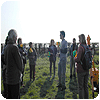










 |
a little bit extra... |
|
The Time Team brief began 'just north of Lincoln, a metal-detectorist has discovered an array of Anglo-Saxon finds. Bronze brooches, pins and clasps, which date probably to the 6th century AD, suggest that an early Anglo-Saxon cemetery has been lying undiscovered here for 1500 years. Most interestingly, the detectorist has also found the remains of a human burial, together with an iron Anglo-Saxon shield boss'. As has been seen from the absorbing Time Team episode of the 25th January, there were more Anglo-Saxon burials to be found at this site. But the brief went on 'it would be boring if we stayed in one field for three days, so we're also going to be investigating the landscape nearby to work out why the Anglo-Saxons might have put their cemetery here… We'll also be doing field walking at the bottom of the Cliff in an attempt to find where our Angles might have lived'. However, although the field walking at the bottom of the cliff was completed, the unexpected discovery of a Late Neolithic/Early Bronze Age enclosure with an associated beaker pottery sherd meant there was no time in the programme for the inclusion of this work on the nearby Anglo Saxon site. 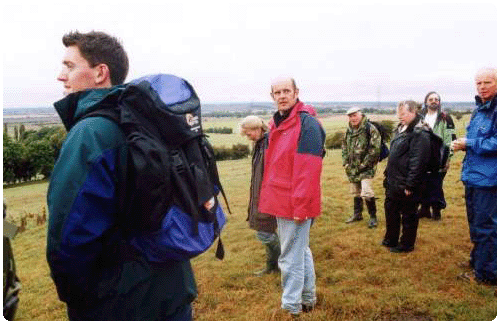 So this is the little extra bit that the Time Team didn't have time to tell… The Time Team arrived with the information that a large number of Anglo-Saxon pottery sherds had been found on the southern fringe of Middle Carlton. Middle Carlton is the closest known Anglo Saxon site to the burials (and it is very close), but the site has been abandoned since the Medieval period and all remains had been ploughed out. However, local knowledge enabled WAG to take the Time Team's pottery specialist Paul Blinkhorn straight to the hot spot of pottery finds just beneath the dip slope of the limestone scarp with the burial sites. 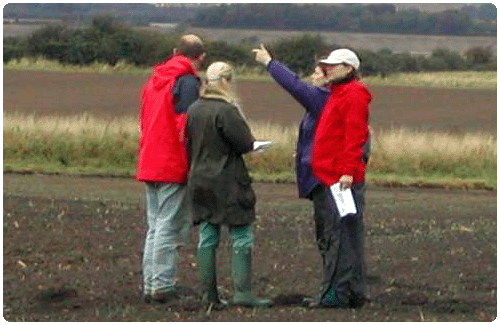 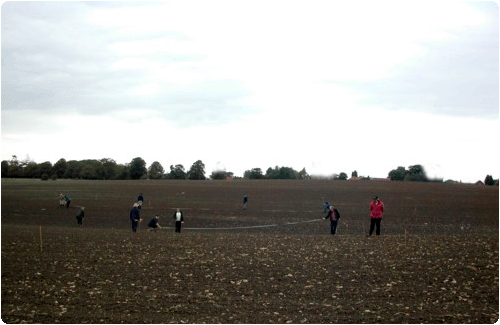 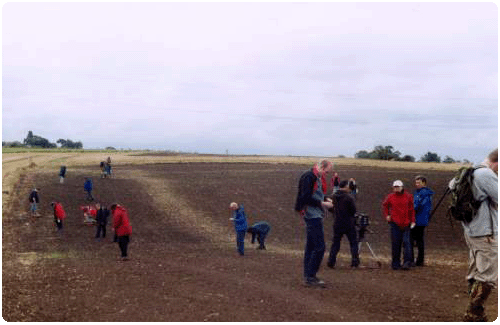 The field walking survey was conducted by archaeologist and member of the Time Team, Theresa Hall. The area was marked out into a grid of ten metre squares with all the finds from each square being bagged and marked with a unique reference number (Click here to see Time Team's site for details). Each square in the grid was walked by two members of the field-walking team. For us this was the most exciting part of the three days and certainly the most productive field walking we have ever undertaken. Quantities of pagan, later Anglo-Saxon and Medieval pottery were found, along with five or six whet stones (including a portable one which hung from a belt) and a small number of spindle whorls. A piece of decorative metal work and a coloured bead were also collected. An appreciable number of flint tools were also found spread over the area surveyed, though in a different distribution pattern to the pottery. A few odd sherds of Roman pottery were also gathered. 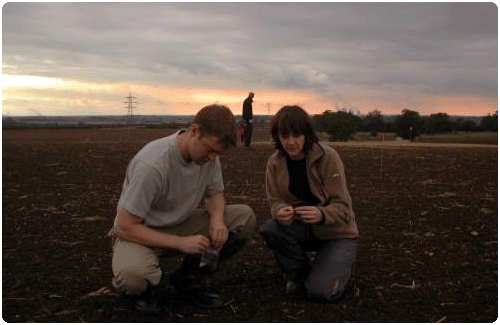 It was a pleasure working under Theresa (red cagoule, below left), and the Time Team crew sent down a van from the main site with hot tea and sandwiches to keep us going as we continued our work late into Day Two. 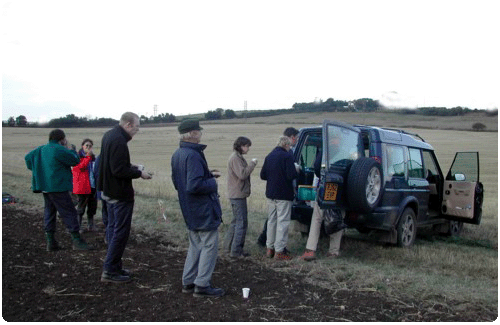 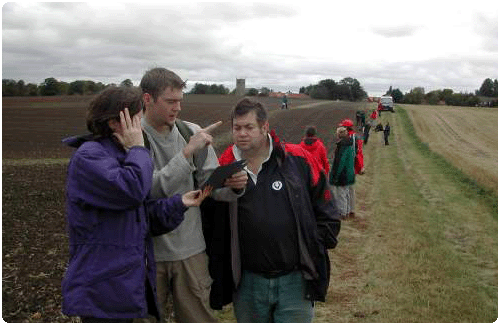 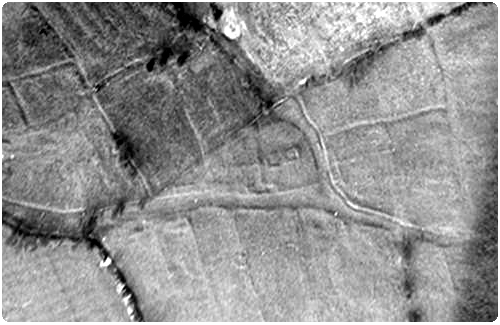 Aerial photographs from the 1940's reveal the distinctive earthworks of the medieval village, including its roads and property boundaries. Superimposing these on modern maps reveals that the pattern of find distribution appears to respect the lost village layout. It may be that this is the settlement where the individuals buried at the top of the hill once lived; pottery contemporary with the burials was found in the village, but it is impossible to be sure. The Time Team will identify and date all of these finds and plot them on a distribution map. This should reveal much more than our cursory observations in the field. 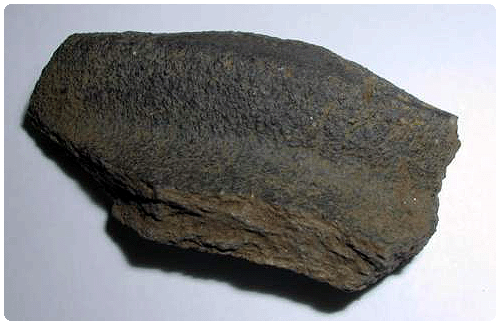 So what happened to Middle Carlton? Maurice Beresford writes in The Lost Medieval Villages of England that 'as early as 1398 the Pope was informed that Middle Carlton … had had no parishioners for forty years and that it is clear that this is one of the genuine Black death destructions of a village' 1. However, P Everson writes in Lincoln History and Archaeology: 'On the basis of its medieval documentation, it [Middle Carlton] has been judged to have come to an end remarkably abruptly in the late 14th century but pottery from this site indicates some survival into the 16th century. Here two hundred sherds of early Saxon pottery were found on the southern fringe of the later settlement. Their presence more extensively may have been masked by the mass of pottery and building stone of the later village. Here too, Roman pottery was present; and medieval sandy ware of middle Saxon type, and certainly some Saxo-Norman wares' 2. Detailed post excavation work follows each Time Team dig and each programme can only reveal a small amount of the information gathered. When all of it is finally processed, the new evidence from the Time Team field survey of Middle Carlton may do much to enhance our understanding of this enigmatic lost village. Many thanks to Theresa Hall and the Time Team for a fabulously interesting three days. Pauline Loven, BA Photographs Nick Loven and Jo Turner, graphics by Nick Loven, BA 1. Beresford M, The Lost Villages of England, Sutton Publishing,
1987, p. 309 |
v.4 'Rise of the Screen' |